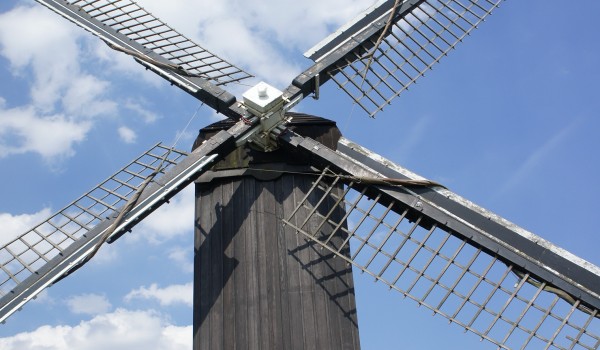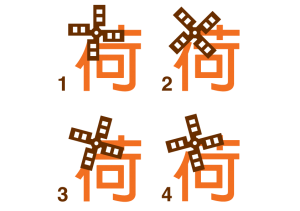
荷蘭人使用風車早在西元 1200 年就開始了(©Sisi Chan 攝影)
早從西元 1200 年起,便已經有荷蘭人使用風車的紀錄,而第一座有紀錄使用於抽水功能的風車則是在1414年就已經開始。風車之於荷蘭人,就像水牛之於台灣人一樣重要,對於古早時代的人民生活是不能忽視的存在。根據統計,直到19世紀,在荷蘭國土上的風車數量高達 9000 座,放眼一片平坦的土地上皆是運轉的風車,也讓來自其他國家的旅客甚至是荷蘭人自己留下了深刻的印象。荷蘭的風車除了抽水、磨麥、伐木等基本作用之外,還有個特殊功能,就是傳遞村莊內消息的「廣播站」。從前在村莊中,風車主人的地位有如市長、公證人或是校長,主要是因為巨大的風車很容易吸引到旅人或是村民到這裡串門子交流訊息,有如新聞中心一般。而為了讓更多人知道訊息,風車主人會利用風車扇葉不同的停留位置「打暗號」,知道暗號意思的村民馬上就會知道消息。而這些暗號也成為一種獨特的「風車語言」。一般所熟知的風車語言共有4種,可依照標號對照下圖說明。
- 短暫休息:當風車扇葉成十字的角度,表示在工作期中的短暫休息。
- 長期休息:當風車扇葉成正X的角度,表示風車進入長時間的休息。
- 慶祝位置:當最高風車扇葉即將碰觸垂直線(荷蘭人也稱之為生命線)時,表示有新生兒誕生。
- 哀傷位置:當最高風車扇葉已經越過垂直線時,表示有人過世。
除此之外,若是在風車塔頂插上旗子,或將上片扇葉停留在垂直的角度,然後插上旗子,都表示目前有非常歡樂的事情發生。不過你可能奇怪,為什麼現在看到的風車扇葉都是呈現短暫休息的角度?由於目前荷蘭風車大多已經沒有再運作了,以短暫休息的扇葉位置則比較容易固定和穩定,也因此目前的風車扇葉風向大多是這樣了。
Funny Dutch windmill language
Windmills in Holland have existed since about 12th century. The first recorded windmill for draining water dates from 1414. Windmills are important for the Dutch for living life just as working buffalo for Taiwanese in old age. According to the records, in the 19th century there were about 9000 windmills in Holland. The image of Dutch landscape with windmills spreading through lowlands created an overwhelming and unforgettable impression on foreigners as well as the Dutch themselves. As we know, the functions of the Dutch windmills were originally draining water or grinding wheat, but there is also a special purpose which is for conveying messages to villagers. Back then, the miller, who was like the city major (Burgermeester), the notary public, and the schoolmaster, was an important role in the community. They gathered news easily from customers and other villagers because windmills always caught the first attention in the village. Therefore, the miller was a working station as well as a news centre. In order to let more villagers accept messages, the windmill language was created. With different positions of sails (wings), villagers would recognize the messages what they want to convey. Basically, there are four different windmill messages have known, please see the picture as below.
- Short rest: rest for a short time during working period.
- Long rest: rest for a longer period.
- Celebration position: with the upper sail just before the vertical (or so-called ‘life line’), indicates there is a new birth in the village.
- Mourning position: with the upper sail past the vertical, indicates someone passed by in the village.
In addition, a flag is flown on the top of the mill, or on the sail in the highest position, it presents something happened with great happiness. Maybe you are wondering why the windmills in Holland nowadays mostly stay in short rest position. Will they work again? No, it is nothing but the best way to tie and steady the sails.
參考資料 Reference
Tradition in windmills




















發佈留言